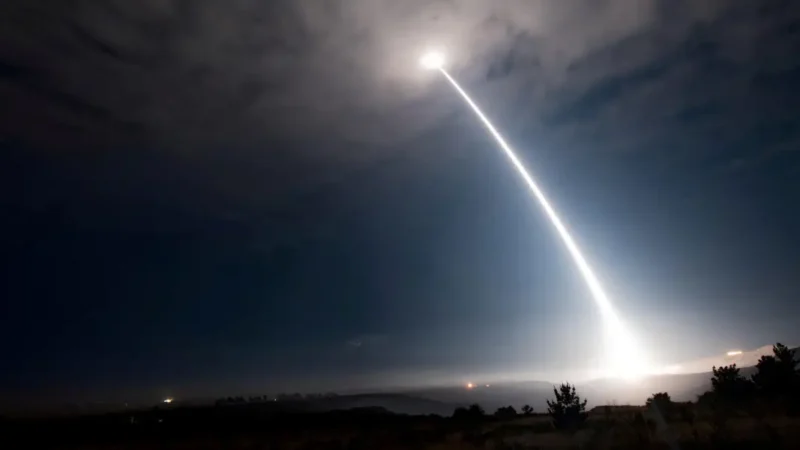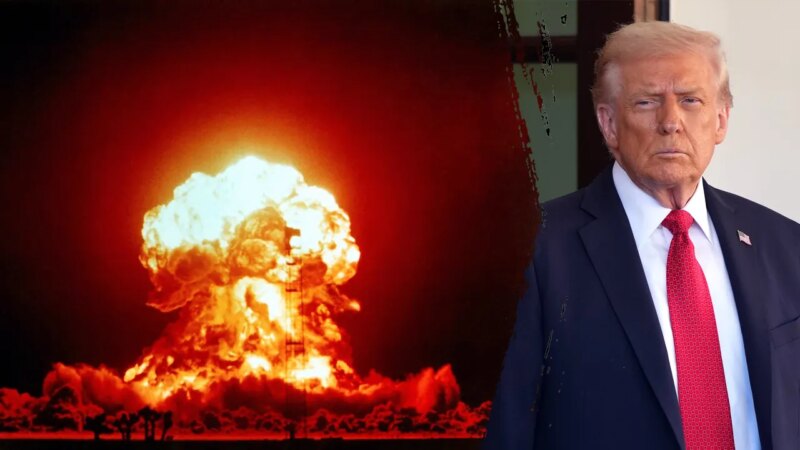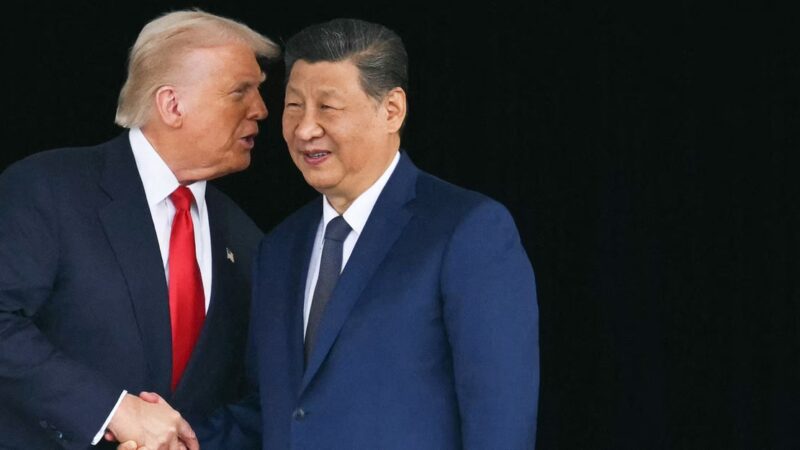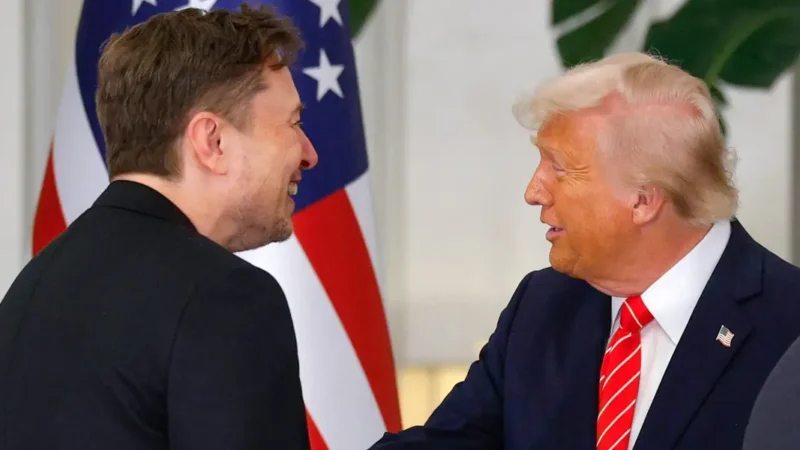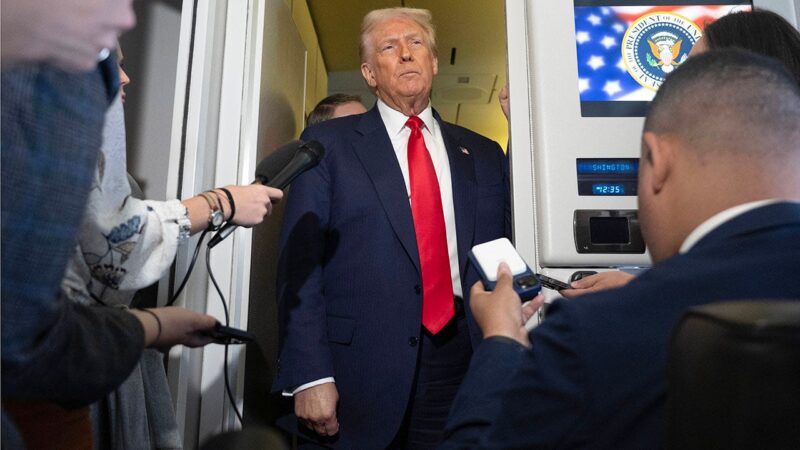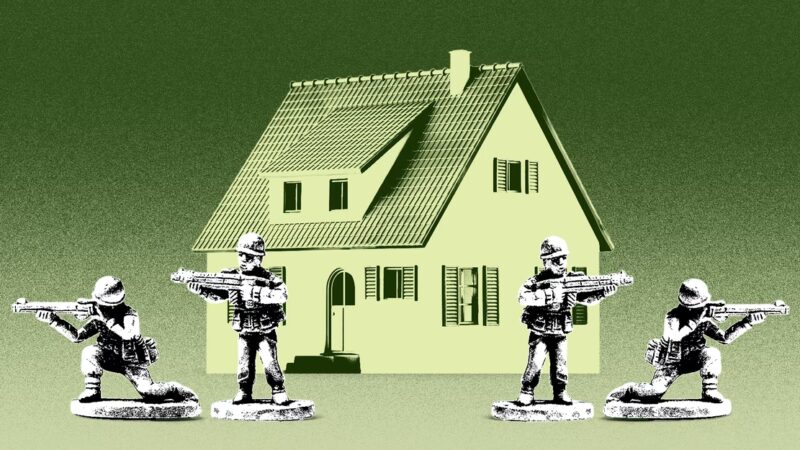Trump Orders US to Revive Nuclear Weapons Tests After 33-Year Hiatus
President Donald Trump said on Thursday morning that he had instructed the Pentagon to begin nuclear weapons tests, which would mark the first such trials in 33 years if carried out.
“Because of other countries’ testing programs, I have instructed the Department of War to start testing our Nuclear Weapons on an equal basis,” Trump wrote on Truth Social.
“That process will begin immediately,” he added.
The president, who is in South Korea on an Asia diplomacy tour, issued the statement just before his scheduled high-stakes meeting with China’s leader, Xi Jinping. The discussions have been largely anticipated to cover trade.
Trump said little about what these nuclear weapons tests would entail, or when exactly they would begin.
The White House and Pentagon did not immediately respond to requests for comment sent outside regular business hours by Business Insider.
The US last conducted a nuclear weapons test in 1992, when Congress pushed to halt such experiments in the wake of the Cold War’s conclusion. Former President George H.W. Bush signed a moratorium on tests in October that year.
Trump’s announced decision is set to further shake up the world’s delicate balance of nuclear weapons power, which had for decades been headlined by the US and Russia. Under a post-Cold War nuclear arms treaty, both countries have agreed to keep their deployed warheads to a maximum of 1,550.
But China is now rapidly entering the calculus, with the US accusing Beijing of building up its arsenal from just 200 warheads in 2020 to 600 this year. Washington fears that China will soon reach the same number of nuclear weapons that the US and Russia have deployed, turning two-way negotiations into a three-cornered struggle.
“Russia is second, and China is a distant third, but will be even within 5 years,” Trump wrote in his Truth Social post of the shifting nuclear power balance.
Beijing has largely also declined to establish the negotiation framework that the US and Russia have used to avoid misunderstandings over weapons of mass destruction. In August, the Chinese foreign ministry called the idea of trilateral talks “unreasonable and unrealistic.”
Fears of a nuclear arms race
Moscow, meanwhile, said it’s been actively testing nuclear superweapons. Russia’s leader, Vladimir Putin, announced this week that the Kremlin had on Tuesday successfully tested a nuclear-capable underwater drone named Poseidon.
Russia’s description of the weapon indicates that its range would allow it to reach the US West Coast if launched from eastern Russia, potentially delivering a nuclear attack on urban hubs there.
Putin said there is “no way to intercept” the Poseidon, but it’s still unclear exactly how effective the weapon is.
Earlier this week, he also said that Russia had tested the Burevestnik, a nuclear-capable cruise missile that can fly for extended periods at subsonic speeds.
Concerns have been growing among nuclear analysts in Washington that the world is on the cusp of a new arms race. Some advisors have urged the US to pursue more aggressive nuclear policies and introduce additional modern methods of nuclear attack as a show of strength.
The consequences of nuclear build-ups are far-reaching, from implications for European and Asian allies under the US nuclear umbrella to American taxpayer costs.
The Pentagon is already set to replace its aging intercontinental ballistic missile arsenal with a new class called the Sentinel, which is expected to cost around $140 billion.

